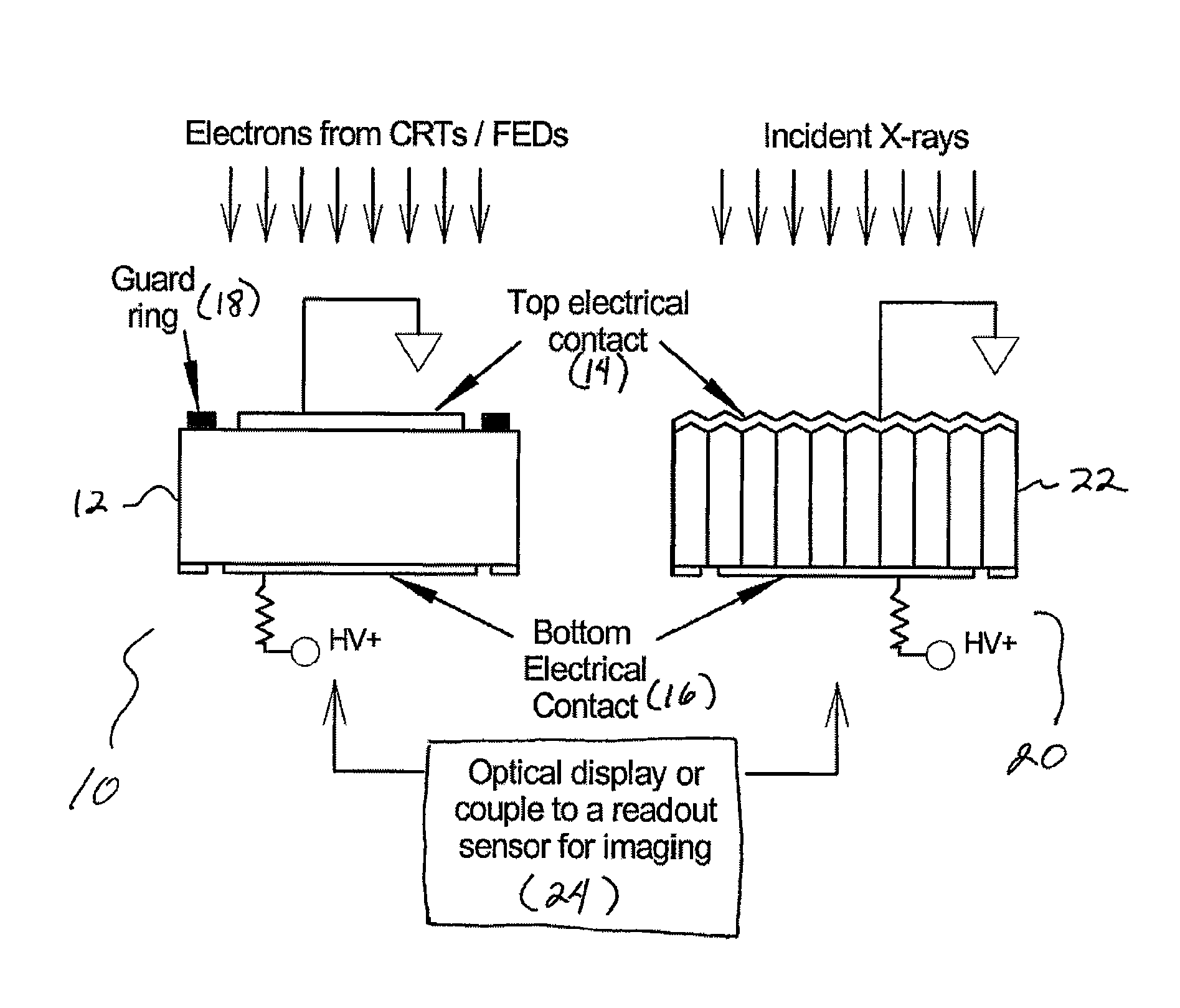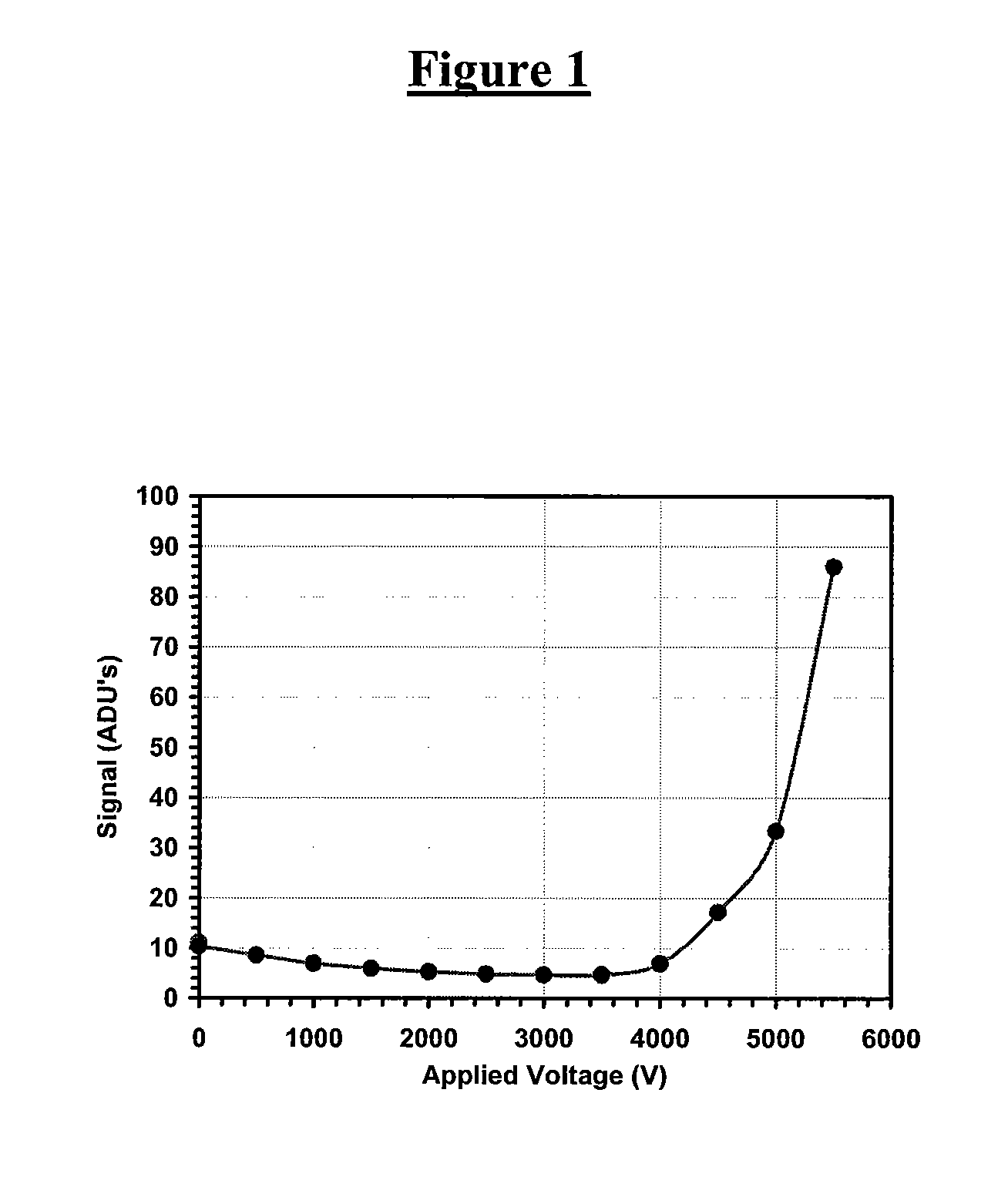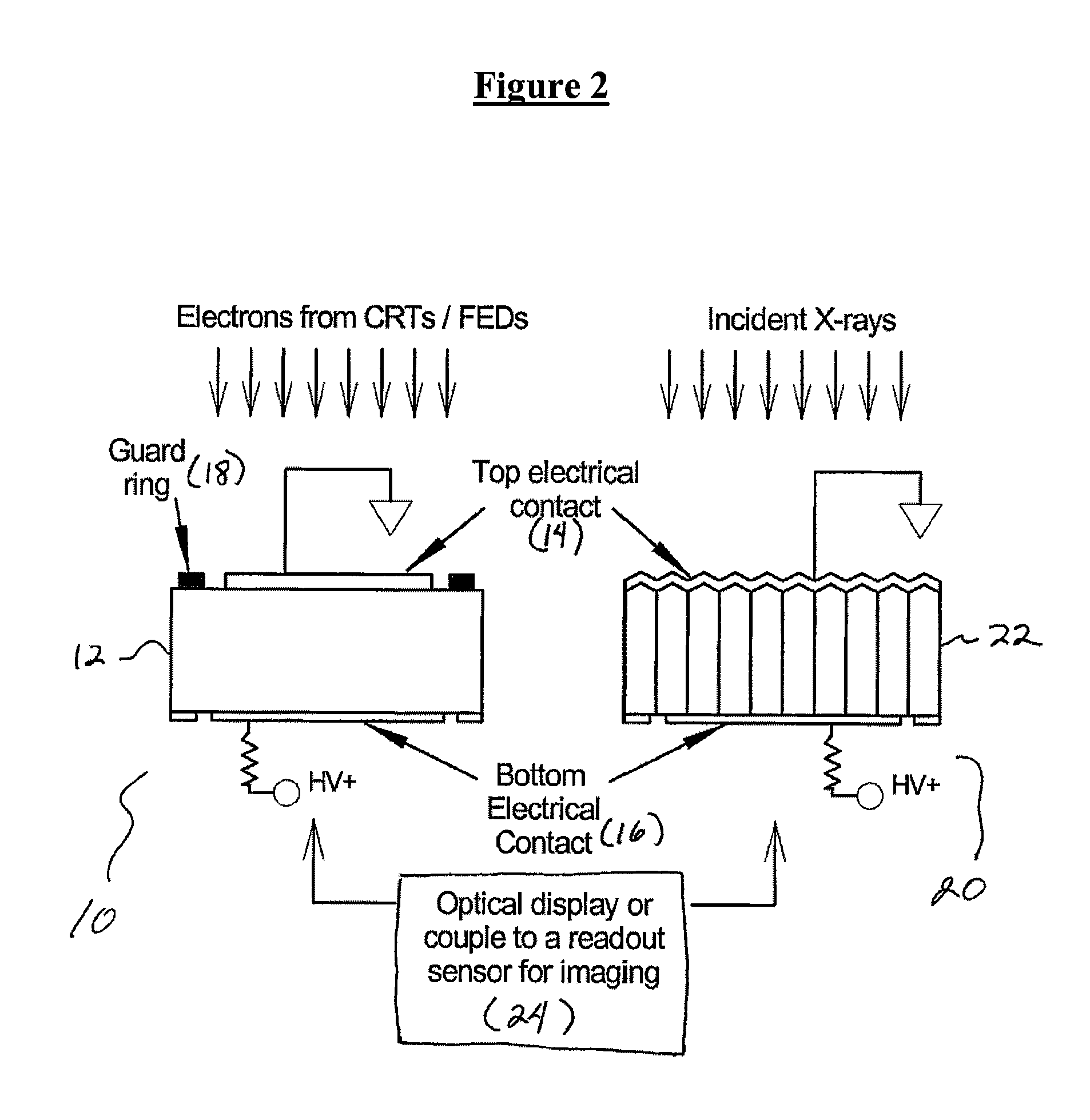Very bright scintillators
- Summary
- Abstract
- Description
- Claims
- Application Information
AI Technical Summary
Benefits of technology
Problems solved by technology
Method used
Image
Examples
Embodiment Construction
[0024]This invention will be better understood with resort to the following non-limiting definitions:
[0025]A. A scintillator, including scintillator film or scintillator crystal, includes a substrate, e.g., a film or crystals of a substance, that absorbs high energy (ionizing) electromagnetic or charged particle radiation then, in response, fluoresces photons at a characteristic Stokes-shifted (longer) wavelength, releasing the previously absorbed energy. Examples include inorganic scintillators such as cesium iodide activated by thallium (CsI(Tl)), cesium iodide activated by sodium (CsI(Na)), sodium iodide activated by thallium (NaI(Tl)), zinc sulfide and oxide (ZnS and ZnO), yttrium aluminum perovskite activated by cerium (YAP(Ce)), yittrium aluminum garnet activated by cerium (YAG(Ce)), bismuth germinate (BGO), calcium fluoride activated by europium (CaF(Eu)), lutetium aluminum garnet activated by cerium (LuAG(Ce)), gadolinium silicate doped with cerium (GSO), cadmium tungstate (...
PUM
 Login to View More
Login to View More Abstract
Description
Claims
Application Information
 Login to View More
Login to View More - R&D
- Intellectual Property
- Life Sciences
- Materials
- Tech Scout
- Unparalleled Data Quality
- Higher Quality Content
- 60% Fewer Hallucinations
Browse by: Latest US Patents, China's latest patents, Technical Efficacy Thesaurus, Application Domain, Technology Topic, Popular Technical Reports.
© 2025 PatSnap. All rights reserved.Legal|Privacy policy|Modern Slavery Act Transparency Statement|Sitemap|About US| Contact US: help@patsnap.com



